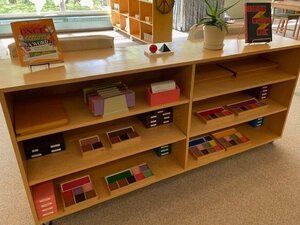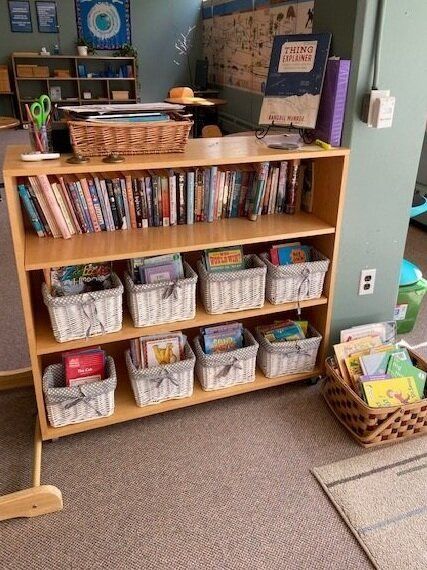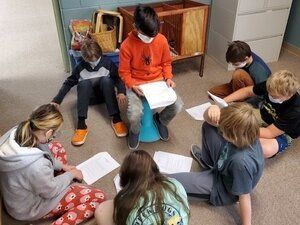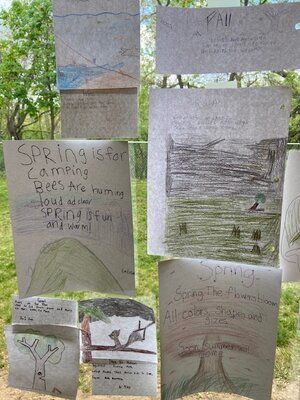Reading in the Elementary Environment
One of the most beautiful things about Montessori education is the way its methods are so carefully aligned to child development. Children in the Elementary (what we sometimes call the second plane) aren’t absorbing everything in the environment anymore. Instead, they’re building concepts through analysis, logic, reason, and imagination.
English Word Spelling: A Mystery To Be Solved
We know from decades of research into reading that children need a multidimensional approach.
They first need to be able to hear and manipulate the sounds in a word (a skill called phonemic awareness). Then they need to build understanding that those sounds can be represented by letters and groups of letters (phonics). While it’s true that English letters make lots of irregular sounds, with elementary children we approach this as a fun puzzle through which we can see the history of our language. For example, did you know that if words have a long-i sound spelled “igh,” they come from Middle English? Or if words end –tion (which we teach as an affix pronounced “shun”), they come from Latin? Through lessons in spelling rules and etymologies, we invite children to think of the language as a mystery we can solve.


Montessori Grammar Boxes help students gain a deeper understanding of the parts of speech.
Language, Language Everywhere!
The Elementary environment brims with language throughout the subjects. We invite children to read the steps to a science experiment by presenting the experiment and then showing them where they can find and repeat it. Each area comes with its own set of nomenclature booklets that name, picture, and define key vocabulary in that subject.
We isolate each part of speech in colorful grammar boxes that provide lots of practice with reading words in isolation and considering them in context. We investigate irregularities with dives into verb conjugation and explorations of language features like nouns that don’t change from their singular to plural, or that don’t indicate a plural with –s. When we introduce new vocabulary in a lesson, we write a label for it so we tie the visual to meaning. All of this work appeals to children who are fascinated by codes, secrets, and the ins and outs of our language.

A rich selection of books, fiction and non-fiction, encourage reading for all ages.
Reading Development Through Engaging And Exciting Lessons
We provide many opportunities for children to read rich fiction and non-fiction texts. They are introduced to the structure of research in early games for developing readers. Together, we explore forms of poetry, narrative, and more. Interpretive reading cards are always popular too. These are short passages that children can read silently and then act out for and with their friends to practice reading comprehension. Throughout a child’s experience in elementary, we observe closely to see which skills they have and which skills are still developing.

A group of Upper Elementary students practice reading their parts for a Readers Theater performance.

Haiku poems adorn the window in an Elementary classroom.
Life-Long Love Of Reading
Through fun, targeted lessons and a language-rich environment, we support children to develop as readers. Our hope is that our students not only develop the necessary skills for being a fluent reader, but also a love for reading that sticks with them for the rest of their lives.
If writing serves to correct, or rather, to direct and perfect the mechanism of speech in the child, reading assists in the development of ideas and language. In brief, writing helps a child physiologically and reading helps them socially.
Dr. Maria Montessori
Programs
Connect
p. 616.451.8627
f. 616.451.0145
Main Campus
1110 College NE
Grand Rapids, MI 49503
Middle school
1723 Pettis Ave NE
Ada, MI 49301
Stepping Stones Montessori School
Stepping Stones Montessori School




